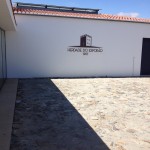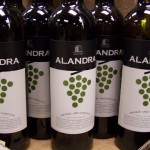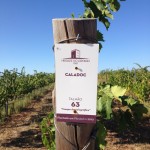 Family owned. That is a rarity among many wineries these days with all the big companies gobbling up the small guys to enrich their portfolios. Portugal, a small country on the Iberian Peninsula, is not immune to the corporate monopolization of wineries. However, there are a couple that have not only survived, but have thrived as family owned. Most notable is Esporao Winery, located in central/southern Portugal. In 1978 the Roquette family purchased an existing winery in the Alentejo region of Spain with high ambitions.
Family owned. That is a rarity among many wineries these days with all the big companies gobbling up the small guys to enrich their portfolios. Portugal, a small country on the Iberian Peninsula, is not immune to the corporate monopolization of wineries. However, there are a couple that have not only survived, but have thrived as family owned. Most notable is Esporao Winery, located in central/southern Portugal. In 1978 the Roquette family purchased an existing winery in the Alentejo region of Spain with high ambitions.
In ’73, Alentejo (an appellation in southern Portugal) was noted for its cheap table reds, not for quality. It was under those conditions that the Roquette family decided to purchase an existing estate with the vision of producing some world-renowned wines from this region. Of course, many thought it was a fruitless effort (no pun intended). Turns out, most were wrong as Herdade Do Esporao has become not only a producer of some excellent reds and whites, but also a major tourist destination. I had the privilege of traveling to Portugal and visiting Esporao and it’s sibling winery in the Douro, Quinta Dos Murcas. Both wineries reflect the vision of quality and innovation that the owners and winery personnel have.
Esporao is located about thirty minutes southwest of Evora at the heart of Alentejo, in the sub-region of Reguengos. At first appearance, it is like any other winery I’ve visited, until I started looking around. Esporao is a sustainable winery with cutting edge technology and an obvious goal to produce high quality wines that express terroir. Esporao has three wine making facilities on the property. One dedicated to red wines with wine maker Luis Patrao, one for whites with wine maker Sandra Alves and a newer facility dedicated to producing their reserve wines. The director of wine making (basically the one in charge of it all) is David Baverstock originally from Australia, who also had a stint in the Douro with Croft and Symington before he came on board with Esporao in ’92.
As I toured the winery with David, I was blown away with how calm everything was around me, despite the fact that they were right in the middle of crush. I have been in the midst of many wineries during this time of season and let me tell you, it can be close to frenetic. However, after hanging out with David for a couple of hours, I began to understand.
David is calm, cool, and collected. Cool Hand Luke comes to mind (for anyone who remembers that Paul Newman flick). His passion for detail and quality were obvious, but his ability to get his team to achieve his vision in the smoothest of fashions was remarkable. He led us through a tasting of the wines of Esporao after the tour, and I have to admit that there wasn’t a bad one in the line-up, from the entry-level Alandra white and red to the reserves.
Speaking of the reserves, I was really impressed with the facility dedicated to these wines. there was a line-up of impressive six-ton open fermentation tanks. The foot-treading technique (yes, they stomp the grapes with their bare feet), is put into practice during fermentation. As David explained, this allows for a more gentle approach to maceration, leading to finer tannic structure and more elegant, graceful wines. They also employ the use of both concrete and clay fermenters along with basket presses, all designed to bring out the quality of the fruit and terrior. I believe (and I could be wrong of course), that this is the first winery I have been to that put so much emphasis on the production of their reserve and top-tier wines.
The bottling facility was one of the most modern and efficient I have seen to date. Upwards to a truckload of wine can be bottled in this facility on a daily basis. Very automated and really mind-blowing to watch (that is if you are as geeky about that kind of thing as I am).
Although most of the region of Alentejo is flat-lands, there are a few hillsides, and Esporao took advantage of one, digging into the hillside to create an underground holding facility for their barrels and bottled wines. As we walked through the dimly lit tunnels, the temperature was perfect for storing wine and barrel aging. It was a really cool place (pun intended).
As we toured the vineyards and grounds of Esporao, I was blown-away by one vineyard in particular. The top dogs of red grapes in this region are Aragones (Tempranillo), Trincadeira, Castelao, Touriga Franca, Alicante Boushet and Touriga Nacional. They grow other grapes of course, including Syrah. However, in this one vineyard (which was quite large), they have planted 189 different varietals. Why would they do that? It’s an experimental vineyard to see how other grape varietals will fare in the land of Alentejo. Pretty cool stuff if you ask me, and it certainly reflects the attitude of the winery…Cutting edge technology along with visionary wine making practices and a deep respect for the land.
The Rouqette family started something years ago that many thought was a ridiculous notion. Create a world-renowned wine making facility in the heart of a region known for cheap table wines. They succeeded. Esporao under the direction of wine maker David Baverstock, produces some excellent wines both in the value category and the premium category. The winery itself has become a tourist destination stop with one of the finest restaurants I have eaten in (I will write about the cuisine in Portugal in another article). If you haven’t explored the wines of Alentejo in Portugal, I encourage you to start with Esporao. Top notch wines at great prices.
The Rouquettes purchased Quinta Dos Murcas in the Doura Valley in 2008. I will dedicate the next article to my visit to this region and the outstanding wines from this winery.
Cheers!
Stan The Wine Man



